
In a surprising resurgence of the platform’s cool factor, Pinterest use is up among teens. Gen Zers are using the website as a canvas for self-expression and exploration. Read on to learn more about how to keep your child safe on the site with Pinterest parental controls.
Pinterest describes itself as “a visual discovery engine for finding ideas.” Users save “Pins” of images or videos to virtual boards. They can record live videos and take photos right in the app, or save images found elsewhere on the internet as Pins.
Many kids come to Pinterest to find inspiration and share ideas around a hobby or interest. Teens are more likely than their adult counterparts to create Pins of things they’ve made and their outfits. Kids also use it to connect with others around common interests, such as books, beauty, or fashion.
Pinterest allows users to interact with each other through comments, direct messages, and shared boards. Although Pinterest may seem relatively tame in comparison to TikTok or Snapchat, parents should take the same precautions as they do with other social media sites.
Here are some ways people might interact with your child on Pinterest:
Just like any social media site, there are risks parents need to be aware of. In 2023, NBC News reported that adult men were using Pinterest to create boards with pictures of young girls and teenagers. The platform responded by rolling out a suite of new Pinterest parental controls, which we’ll discuss below.
Aside from online predators, Pinterest can also expose your child to content that promotes negative body image, negative self-esteem, and even suicidal thoughts. Like other websites, Pinterest uses an algorithm to recommend content based on what your child searches and the pins they click. Research shows that excessive social media use can make kids feel bad about themselves, so it’s important to talk to your child about the content on their feed and limit the time they spend on social media — including Pinterest.
Exposure to inappropriate content is also a risk on Pinterest. Pins can lead kids to websites with explicit content, misinformation, and just plain spam, solely because they clicked a pin that caught their attention.
There are also plenty of positive reasons to let your child use Pinterest, with guardrails.
For example, Pinterest can be a great source of inspiration, creative expression, and connection because users have the ability to dive deeper into their interests. Plus, Pinterest is full of tutorials that can help kids learn new skills, like cooking and coding.
Pinterest can even foster a boost of positivity. Recent research from Pinterest and University of California, Berkeley, found that daily interaction with inspiring content on Pinterest helped buffer students against things like burnout and stress.
The good news is that Pinterest parental controls are fairly robust. The company recently took steps to protect minors on their site, including age verification, automatically setting accounts to private for users under 16, and additional reporting options. The minimum age for Pinterest users is 13.
There are also extra steps you can take to keep your child safe on Pinterest:
While Pinterest can be a positive creative outlet for kids, it’s not without risk. Parents should educate themselves about the potential dangers and take steps to keep their child safe on the site.
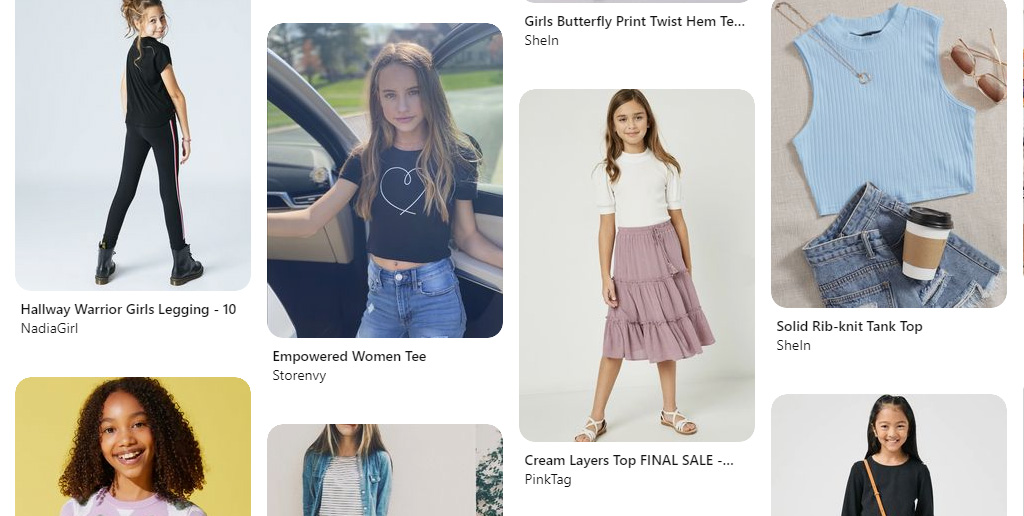
With over 445 million users each month worldwide, Pinterest has become a popular platform for people of all ages to share and discover ideas. This includes millions of preteen and teen girls who enjoy using Pinterest for inspiration, from fashion and DIY projects to room decor and study tips.
But parents need to be aware of Pinterest’s dark side. A recent investigation revealed that some adult men are using Pinterest to curate boards and sexualize pins featuring underage girls.
Pinterest is a website where you can save and share pictures of things you like. You can make boards with different themes, like recipes, fashion, or travel. Pinterest does not allow pictures of naked people or sexual subjects, and you’re required to be at least 13 years old to create an account — which hasn’t stopped many tweens from signing up anyway.
But a recent NBC News investigation discovered that adult men are skirting these rules by using Pinterest to make boards with pictures of young girls and teenagers. They find these pictures by using Pinterest’s suggestions, which are based on what people search for and what they like. Sometimes, they leave sexual comments about the girls.
Historically, Pinterest hasn’t had a good way to stop these people or to report them. You could only report one picture at a time, not a whole board, and you couldn’t report pictures of minors.
In response to the alarming findings, Pinterest has taken several measures to safeguard its younger users. One significant update is making Pinterest accounts under the age of 16 private by default. This means that boards and pins for users under 16 are not visible or accessible to anyone but the user themselves.
Pinterest has also introduced a way to report a pin for including “nudity, non-nudity or intentional misuse involving minors.” And you now have the ability to report an entire board, not just the individual pins.
Pinterest also says it will use more artificial intelligence (AI) to find and automatically block people who use the platform inappropriately. It will also ask people to verify their age when they sign up.
Additionally, Pinterest will soon reintroduce the ability for teens to share their inspiration with the people they know, but only if they grant permission for those individuals to view their content.
You can stay up to date on Pinterest’s plans in their teen safety hub. These changes are aimed at limiting the exposure of underage users to potential predators and providing a safer environment for teenagers to explore their interests and passions.
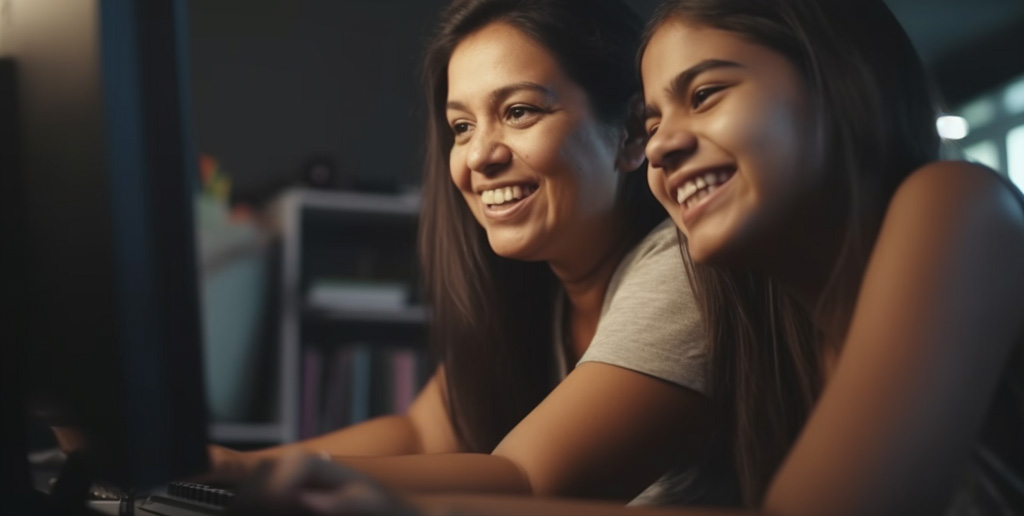
While Pinterest is working to improve its platform’s safety, it’s essential for parents to take an active role in supervising their teen’s online activities. Here are some ways you can help protect your teen on Pinterest:
Communicate: Talk to your kid about the potential dangers they may encounter online, including on Pinterest. Encourage open communication and make sure they understand the importance of being cautious when sharing personal information, pictures, or engaging with strangers on the platform.
Monitor their Pinterest activity: Keep an eye on your teen’s boards and pins to ensure they are not sharing inappropriate content or engaging with suspicious users. You can also follow their account to receive updates on their activity.
Use upcoming parental control features: Pinterest is planning to launch a new feature that will allow parents to require a passcode for their teen to change certain account settings. This added security measure can help you maintain control over your child’s privacy and safety settings.
Teach them about privacy settings: Familiarize yourself and your teen with Pinterest’s privacy settings. Make sure your child’s account is set to private and that they understand how to adjust their settings to control who can view their content.
Encourage safe sharing: Remind your child that they should only share their content with people they know and trust. They should be cautious about granting access to their boards and pins to unfamiliar individuals.
Report inappropriate content and users: If you or your child come across inappropriate content or suspicious users on Pinterest, report them immediately. This can help protect not only your child, but also other users on the platform.
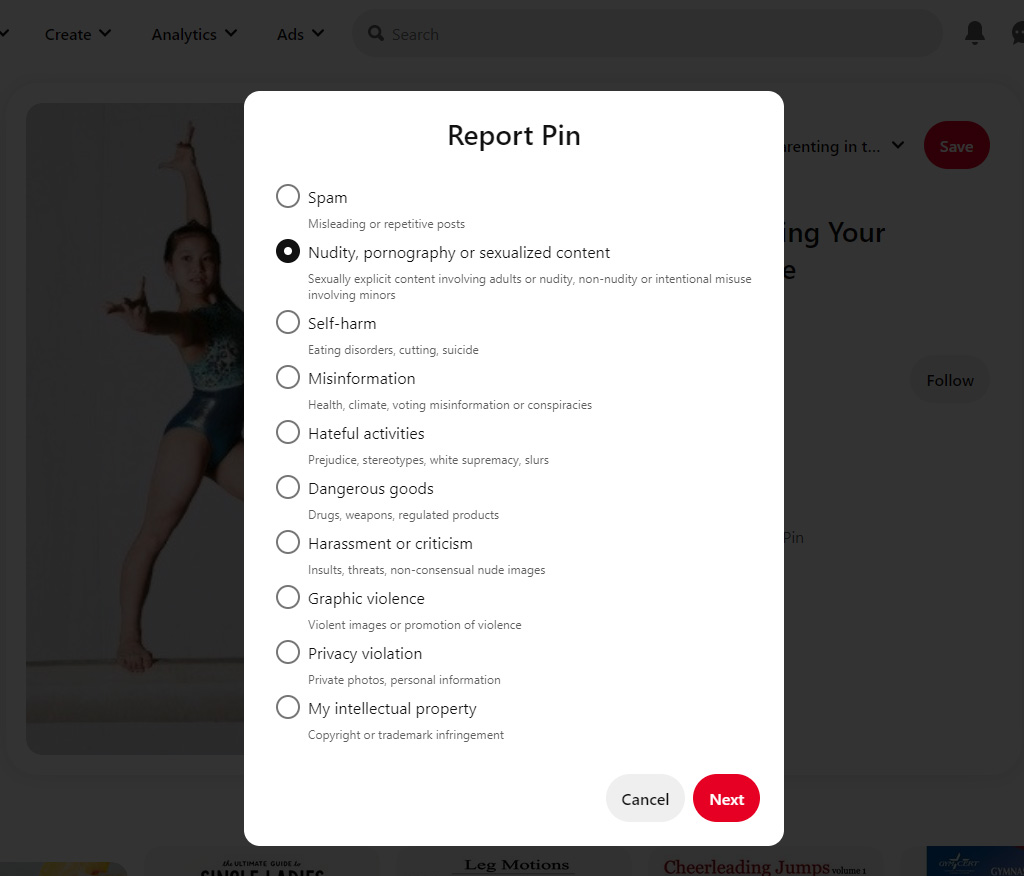
Stay informed: Stay updated on the latest developments in online safety and privacy. As technology and social media platforms continue to evolve, it’s crucial to be aware of new risks and measures that can help protect your child.
Pinterest can be an inspiring and enjoyable platform for tweens and tweens to explore their interests and passions, but parents need to stay involved to ensure their safety. By utilizing available tools and fostering open communication with your child, you can help protect them from potential predators while they continue to enjoy the benefits of Pinterest.
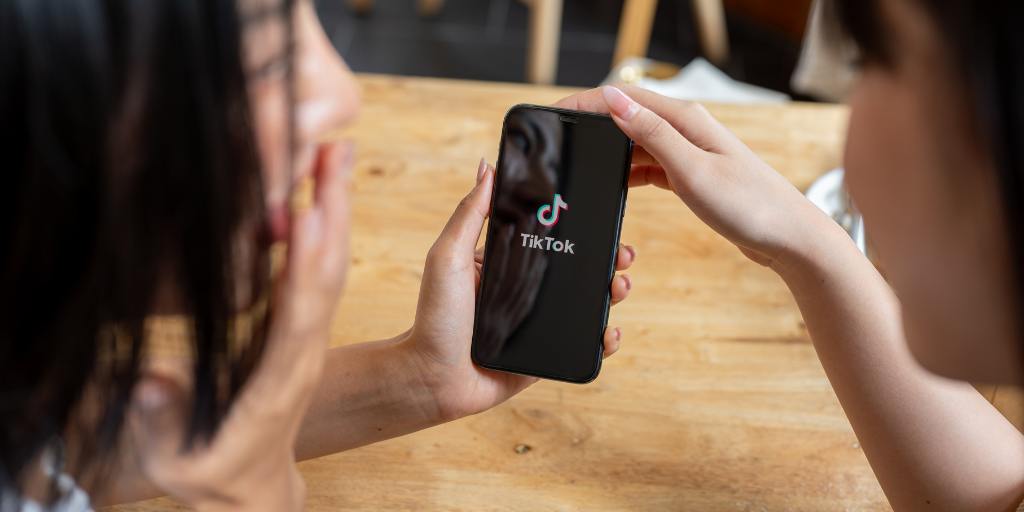
Welcome to Parent Pixels, a parenting newsletter filled with practical advice, news, and resources to support you and your kids in the digital age. This week:
📵 Predators are using TikTok to exploit minors. Minors are using TikTok’s live feature to perform sexually suggestive acts on camera in exchange for money and gifts, according to a report by Forbes and documentation from TikTok’s own internal investigation. NPR and Kentucky Public Radio also found that TikTok tweaked its algorithm to more prominently show attractive people, and the platform quantified how much time it takes for viewers to become addicted to the platform: 260 videos, or under 35 minutes. Even though minors aren’t allowed to livestream or receive gifts, it’s relatively easy for children to fib about their age when they sign up. Performing suggestive acts on camera in exchange for gifts is just one way predators can groom targets for sexual abuse and sextortion. TikTok says it has a zero tolerance policy for child sexual abuse material, and the platform does have parental controls — but they only work if your child sets their correct birthdate.
🤖 Social media companies aren’t doing enough to stop AI bots. That’s according to new research from the University of Notre Dame, which analyzed the AI bot policies and mechanisms of eight social media platforms, including Reddit, TikTok, X, and Instagram. Harmful artificial intelligence bots can be used to spread misinformation, hate speech, and enact fraud or scams. Although the platforms say they have policy enforcement mechanisms in place to limit the prevalence of bots, the researchers were able to get bots up and working on all the platforms studied. If you haven’t talked to your child about the risks of bots, misinformation, and online scams, now’s the time — if your child has used any social platform, odds are high that they’ve encountered a bot already.
😩 Teens are stressed about their future, appearance, and relationships. A team of researchers surveyed US teens about what stressors today’s teens are feeling. A majority (56%) of teens are stressed about the pressure to have their future figured out, 51% felt pressure to look a certain way, and 44% felt like they needed to have an active social life. While adults drove teen’s pressures to have their futures planned out and achieve the most, the pressure to have an active social life and keep up with appearances were driven by social media, the teens themselves, and peers. Teens are struggling to reduce those stressors, too — time constraints, difficulty putting tech away, and feeling like rest isn’t “productive” enough were all blockages to practicing more self-care. Techno Sapiens breaks down things parents can do to help their stressed-out teen.
Parent Pixels is a biweekly newsletter filled with practical advice, news, and resources to support you and your kids in the digital age. Want this newsletter delivered to your inbox a day early? Subscribe here.
Helping your teen manage stress starts with open and honest conversations. Here are five conversation-starters designed to prompt meaningful chats about self-care, stress management, and healthy ways to navigate the pressures they face:
It’s spooky season! A Good Girl’s Guide to Murder is a popular young adult mystery thriller (and Netflix series) — but is it safe for kids? If your child is interested in this series, read this guide first.
Are your child’s group chats causing major drama in their friend group? Here’s what parents need to watch for when their child starts texting independently — and how to help your child handle it.
🤳 Instagram remains the most used social app among teens, followed by TikTok, according to a new report by Piper Sandler.
🎃 Halloween is next week! In Washington, where BrightCanary is based, the most popular Halloween candy is Reese’s Peanut Butter Cups. What’s the most popular treat in your state?
📍 We’re on Pinterest! Follow BrightCanary to keep up with our latest parenting tips, infographics, and resources.
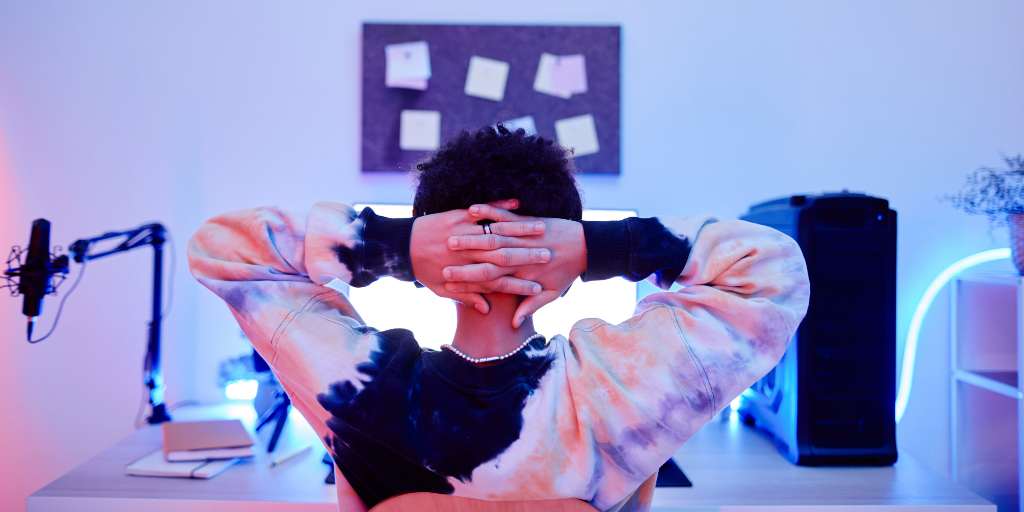
To say Reddit is huge is an understatement. Just about any Google search these days is bound to turn up at least one hit from the site. Last year alone, Reddit had 850 million monthly active users, putting it ahead of Snapchat, Pinterest, and LinkedIn. But is Reddit safe for kids? If your child wants to browse this popular platform, read on to hear our take.
Reddit’s slogan is “Dive into anything,” and that certainly holds true. It’s an enormous social network made up of smaller communities centered around various interests, hobbies, and passions. These smaller communities are known as subreddits, and the range of topics they cover is truly mind-boggling, such as movies, vintage recipes, and relationship advice.
Users have a front page, which features posts from all the subreddits they follow. They can also browse r/all, which displays popular posts from different subreddits.
The age minimum for creating a Reddit account is 13. However, the signup process doesn’t require any proof of age. In addition, while an account is needed to post, comment, or vote, a person can read posts without an account.
Reddit does have content guidelines which apply to the site as a whole. In addition, each subreddit has its own rules. These rules and guidelines are enforced by volunteer moderators, as well as admins employed by Reddit.
This level of moderation does help, but the sheer volume of posts means things inevitably slip through the cracks. Additionally, moderators are only looking for people who violate the guidelines, not if something is unsuitable for children.
The answer to this is a hard no. Let’s break down why we feel so strongly that Reddit isn’t safe for kids:
Even though Reddit’s minimum age is 13, that doesn’t mean your child should use it. Due to the lack of parental controls and the high likelihood of being exposed to problematic communities and troubling content, Reddit is not safe for kids.

Welcome to Parent Pixels, a parenting newsletter filled with practical advice, news, and resources to support you and your kids in the digital age. This week:
If your teen suddenly has a new lexicon of mental health terms, like “trauma response” and “major depressive disorder,” TikTok may be to blame. A poll by EdWeek found that 55% of students use social media to self-diagnose mental health conditions, and 65% of teachers say they’ve seen the phenomenon in their classrooms.
“Kids are all coming in and I’m asking them, ‘Where did you get this diagnosis?’” said Don Grant, national adviser for healthy device management at Newport Healthcare, in an interview with The Hill. Grant said he would get responses such as “Oh, there’s an [influencer],” “Oh, I took a quiz,” or “Oh, there’s a group on social media that talks about it.”
Social media can help kids understand their feelings and find ways to cope. The EdWeek poll found that 72% of educators believe social media has made it easier for students to be more open about their mental health struggles. And it makes sense that kids would turn to a space they know — social media and online groups — to get information, rather than finding a mental health professional first (or talking to their parents).
However, the topic gets tricky when you consider the fact that social media sites don’t exactly verify that the people sharing medical advice are, in fact, medical experts. While there are plenty of experts sharing legitimate information online, there are also influencers who are paid to talk about products that improved their anxiety and off-label medications that cured their depression.
Big picture: Self-diagnosing on social media is also problematic because algorithms can create a self-fulfilling prophecy. Most algorithms, like TikTok, use a user’s activity to determine what they see next on their feed. If a teen thinks they have depression, they’ll see more content about depression — which may confirm their self-diagnosis, even if they aren’t clinically depressed.
As parents, it’s important to talk to your child about mental health, how to cope with big emotions, and what to do if they need a professional. But it’s also essential to know where they’re getting their mental health information and what they’re seeing on their social media feeds.
Don’t dismiss their feelings outright — be curious. Talk to your child about verifying their sources of information. If they’re getting medical advice from an online creator, are they an actual doctor or therapist? Or are they simply someone who’s popular online?
Parent Pixels is a biweekly newsletter filled with practical advice, news, and resources to support you and your kids in the digital age. Want this newsletter delivered to your inbox a day early? Subscribe here.
Gov. Ron DeSantis recently signed a bill that bans kids under 14 from creating social media accounts and requires parental consent for kids under 16. The bill requires that companies delete accounts belonging to 14- and 15-year-olds and implement age verification measures to ensure that kids aren’t lying about their ages.
Florida’s bill is the most restrictive social media ban in the nation, and that’s after DeSantis vetoed an earlier version of the bill that would have banned all accounts for kids under 16. At the bill-signing ceremony, Republican Speaker Paul Renner said, “A child in their brain development doesn’t have the ability to know that they’re being sucked into these addictive technologies and to see the harm and step away from it, and because of that we have to step in for them.”
Legal upheaval: The bill takes effect Jan. 1, 2025, pending any legal challenges. Tech industry groups have already come out against the bill, including NetChoice, an association that represents major social media platforms and is currently battling with the Supreme Court over a separate social media law.
“This bill goes too far in taking away parents’ rights,” Democratic Rep. Anna Eskamani said in a news release. “Instead of banning social media access, it would be better to ensure improved parental oversight tools, improved access to data to stop bad actors, alongside major investments in Florida’s mental health systems and programs.”
In our last issue, we covered Utah’s decision to repeal and replace its social media law after months of legal challenges that delayed the bill’s implementation. Although DeSantis and Renner have signaled that they’re ready to fight to keep Florida’s social media ban in place, time will tell whether or not Florida’s kids will have to wait until their sweet 16 to get on Snapchat.
How will you check in with your child about online safety this week? Save these conversation-starters for your next check-in.
Sleep can impact everything from brain performance, to mood, to mental and physical health. Our children aren’t getting enough sleep, either, and screens are one of the prime suspects. But how does screen time affect sleep?
Pinterest use is up among teens. Gen Zers are using the website as a canvas for self-expression and exploration. Learn more about how to keep your child safe on the site with Pinterest parental controls.
😮💨 What is the “mental load” of parenting, and how does it affect your emotions, sleep quality, and job performance?
🚩 What are the red flags that you need to worry about your child’s mental health? Save this list from Techno Sapiens.
🤝 Rules and restrictions aren’t the end-all, be-all to parenting in the digital age — you also need a healthy, emotionally rich relationship with your teen. Read more at Psychology Today.
📵 When it comes to protecting kids’ mental health, Florida’s social media ban won’t be that simple, writes David French for the New York Times.
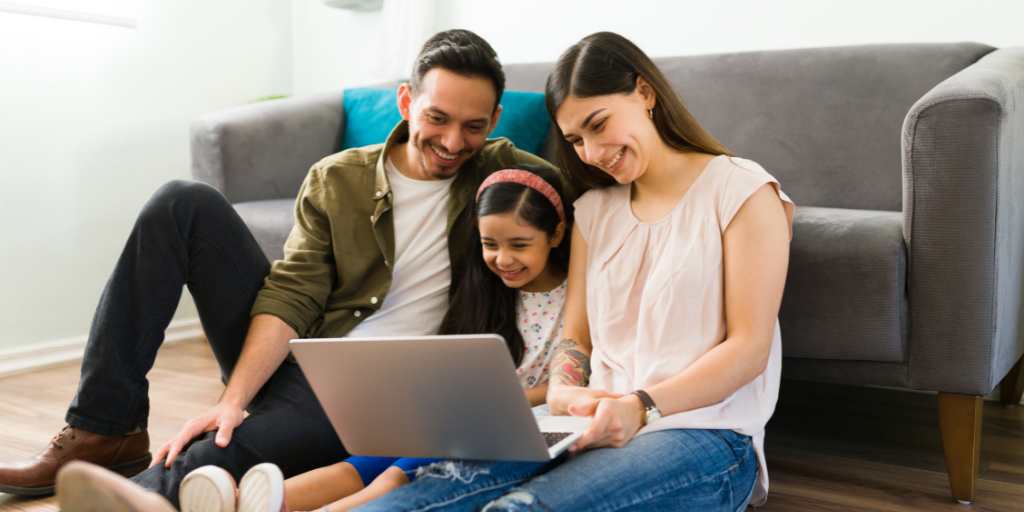
The internet is an incredible tool. It offers endless opportunities for learning, communication, and entertainment. But it also has its pitfalls. Navigating the conversation about the digital world with your child can be daunting. This guide simplifies the process, helping your child start their online journey with knowledge and caution.
Before diving into the conversation, get familiar with the platforms and websites that captivate kids today. From gaming sites to educational platforms, understanding where they’re headed will help you guide the dialogue.
These BrightCanary guides for parents will get you started:
Introducing the digital world to your child proactively can set the foundation for responsible usage. Preparation beats reparation.
To help your child navigate digital spaces, talk to them about the following terms they’ll encounter online:
You can break these categories into more detail. For example, take your child on a Google search adventure and show them how to find answers to their questions. If appropriate, do the same on YouTube and look up kid-friendly videos related to their interests.
If your child doesn’t already have a Google account, now is a great time to set one up. When you add their account information to BrightCanary, you’ll be able to view what they search and watch online. Plus, BrightCanary alerts you when your child encounters something inappropriate.
Encourage your child to question the reliability of online information with critical thinking and skepticism. Explain that just because something is on the internet, doesn’t mean it’s true.
You might start the conversation with a practical question: “Do you believe everything you’re told?”
Of course, the answer will be “no.” You can say, “The same is true of the internet. Always ask, ‘How do I know this is true?’ or ‘How can I investigate whether this is true or not?’”
Draw parallels between the digital realm and real-world scenarios. For example, equate sharing personal information online with giving a stranger personal details in a public park. Compare sharing a password with giving a stranger a key to your house.
Nothing beats hands-on experience. Spend some time browsing the internet together, discussing what you encounter and how to deal with difficult situations.
Talk to your child about what content is suitable for their age and why. For example, it’s safe for them to watch kid-friendly, parent-approved YouTube videos. It’s not appropriate for them to talk to strangers online. Ask them what they think is safe and appropriate, and what is not. Get them thinking.
Internet risks can be divided into four categories:
Talk to your child about these risks. Remind them that if they have questions or feel uncomfortable about something they see online, they should talk to a parent immediately.
One of the best ways to help your child use the internet safely is to create a digital agreement. Also known as a digital device contract, this agreement outlines acceptable online behavior, the consequences of straying from it, and clear guidelines around device use. The agreement can be printed and posted somewhere around the house as a reminder.
What should a parental-child digital agreement include? BrightCanary’s free, downloadable template includes the following:
The agreement should be signed by the parent and child to indicate they accept it and are obligated to follow it.
Introducing your child to the internet can feel overwhelming. But with the right preparation, you’ll set your child (and yourself) up for success. Start with the basics, like what the internet is and how to use popular platforms. Then, talk about safety and responsibility. A digital device contract can help lay out important rules and guidelines.
Doug Noll, JD, MA, is a professional peacemaker, writer, and mediator. Doug has studied human conflict for over 45 years and worked as a lawyer for over two decades. Learn more about Doug’s work at dougnoll.com.
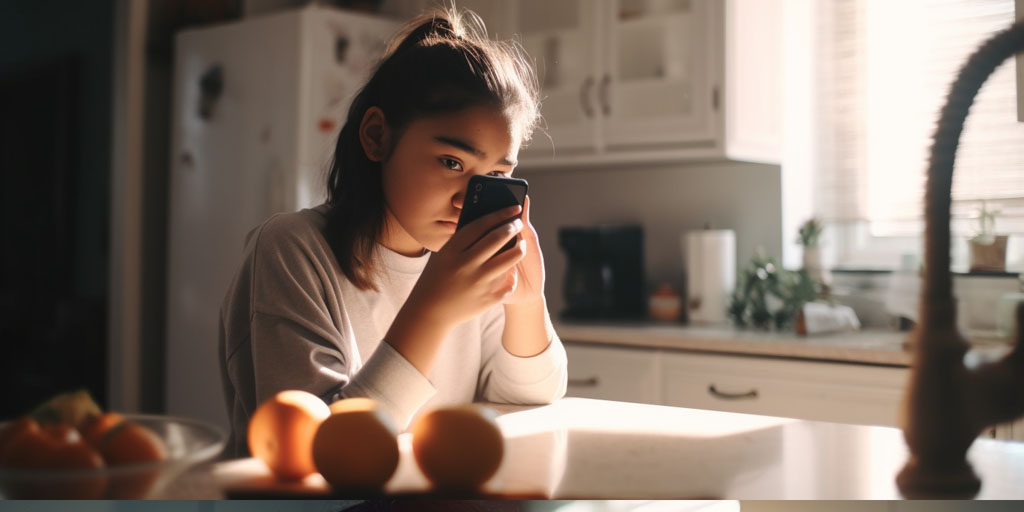
A recent study by Canadian researchers tested whether using less social media could make teens and young adults feel better about their bodies.
About 22% of children and adolescents struggle with disordered eating, which can lead to serious mental and physical issues. One of the predictors of developing an eating disorder is poor self-esteem and low body image.
But can cutting back on social media improve kids’ self-esteem? Here’s what the study found.
In 2021, researchers recruited 220 participants for a randomized controlled trial. The participants were 17-to-24-year-old undergraduate Canadians (76% female, 23% male) struggling with depression or anxiety. Half of them were told to use social media for just one hour a day for three weeks. If they used it for more than an hour, they got a reminder email. The other half were allowed to use social media as much as they wanted.
The participants submitted screenshots of their smartphones’ daily screen time reports. Social media platforms tracked in this study included Facebook, Instagram, TikTok, Snapchat, Twitter, Pinterest, and Tumblr. Not included were video streaming services — like YouTube or Netflix — or messaging platforms like WhatsApp or Facebook Messenger.
Participants were asked questions about their weight and body image before and after the three-week period.
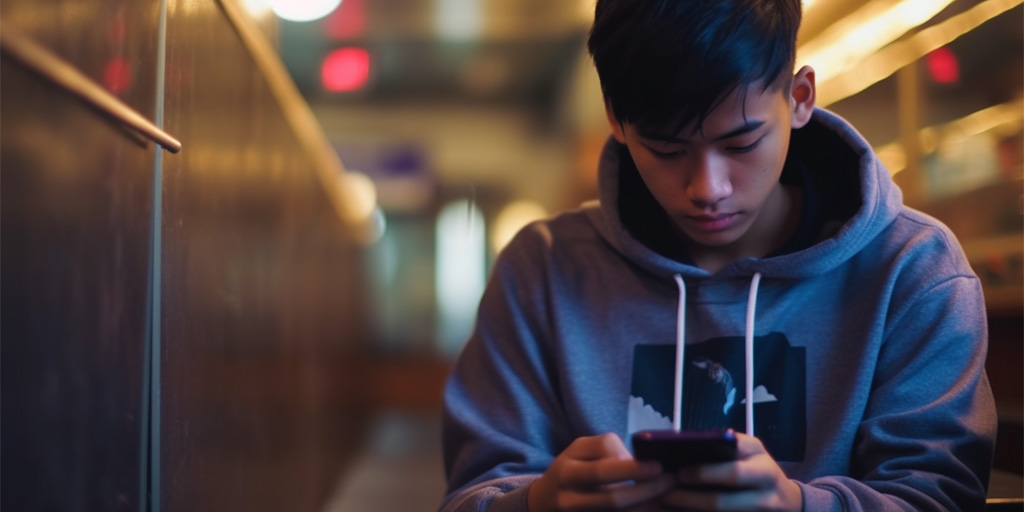
While not everyone stuck to the one-hour limit, on average, the people in the restricted group cut their social media time by half. They used social media for only 78 minutes per day, while participants in the unrestricted group used social media for 188 minutes per day.
After three weeks of using less social media, young people of both genders felt better about their bodies and reported higher levels of self-esteem and body image. There was no change to these metrics in the unrestricted group.
Most studies measuring the impact of social media are only correlational — i.e. they tell us if there’s an association between social media use and negative effects, but they don’t tell us if social media causes the negative effects.
Because of the way this study was conducted, it shows social media use has a direct negative impact on body image. And, most importantly, it shows us that using less social media can actually help improve body image and self-esteem.
It only lasted three weeks, so we don’t know if these improvements would last longer. The study only tracked social media use on phones, not other devices. And it only looked at people who were feeling anxious or depressed, so we don’t know if the results would be the same for everyone.
This study suggests that parents should encourage teenagers to limit their social media use to about an hour a day in order to support a healthy body image and self-esteem. In addition, videos featuring disordered eating are rampant on platforms like YouTube, TikTok, and Instagram; educate yourself about this type of content and discuss the topic with your kids.
A growing body of experts recommend monitoring your child’s online activity, so you can talk to them about concerning content as soon as it crops up. BrightCanary gives you visibility into your child’s social feeds and messages, Google and YouTube searches, and texts. To help your kids develop healthy digital habits, it’s important to have open conversations with them about the potential impact of social media use on mental health.